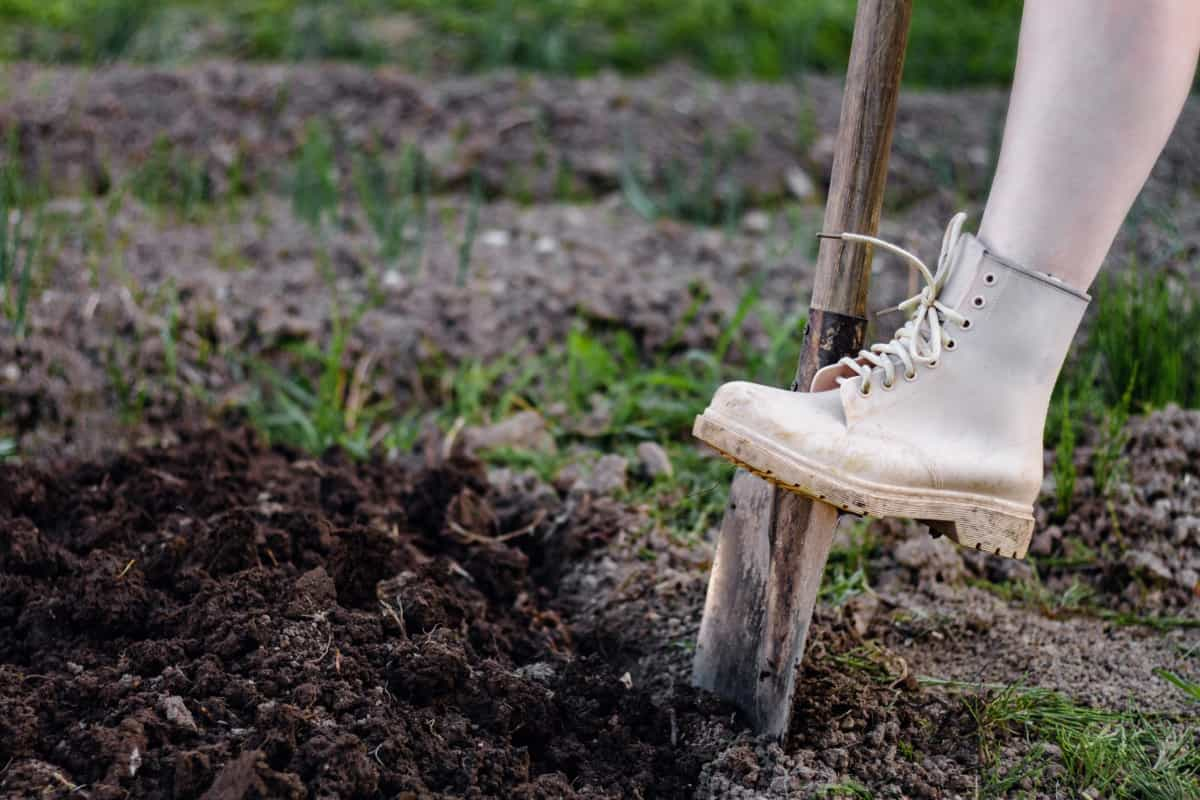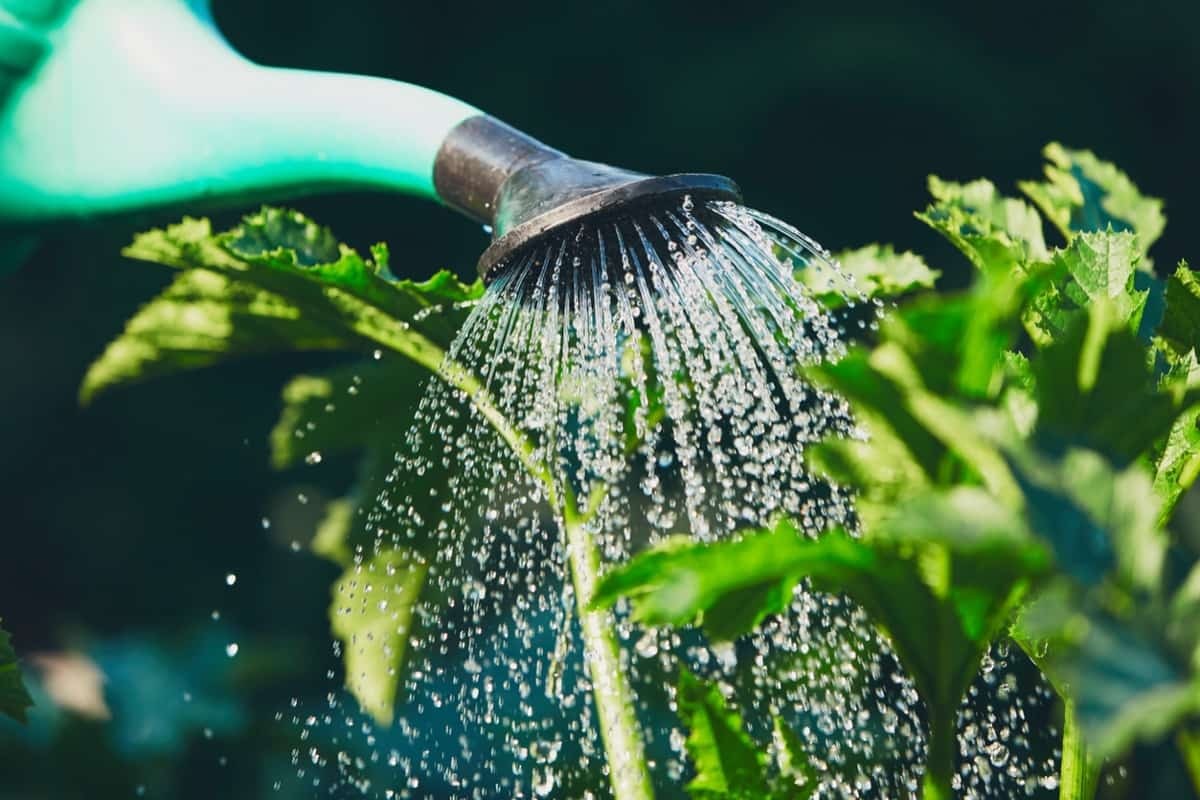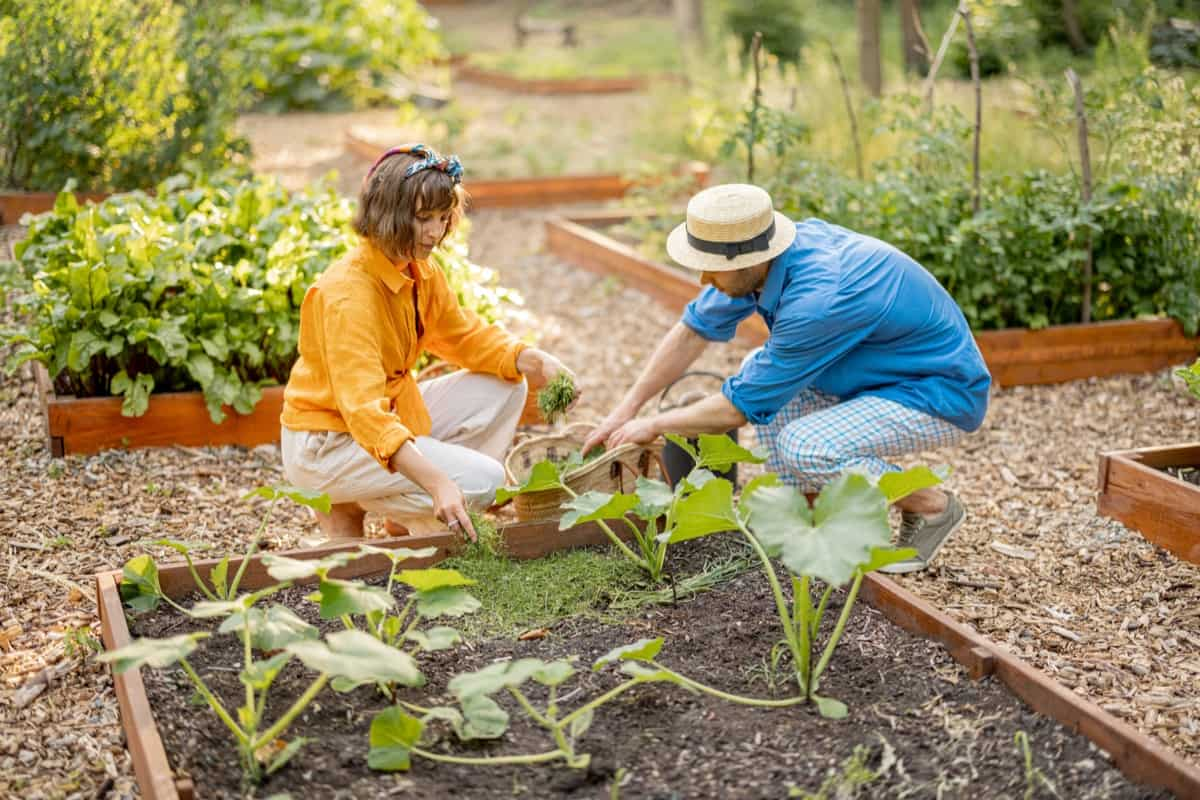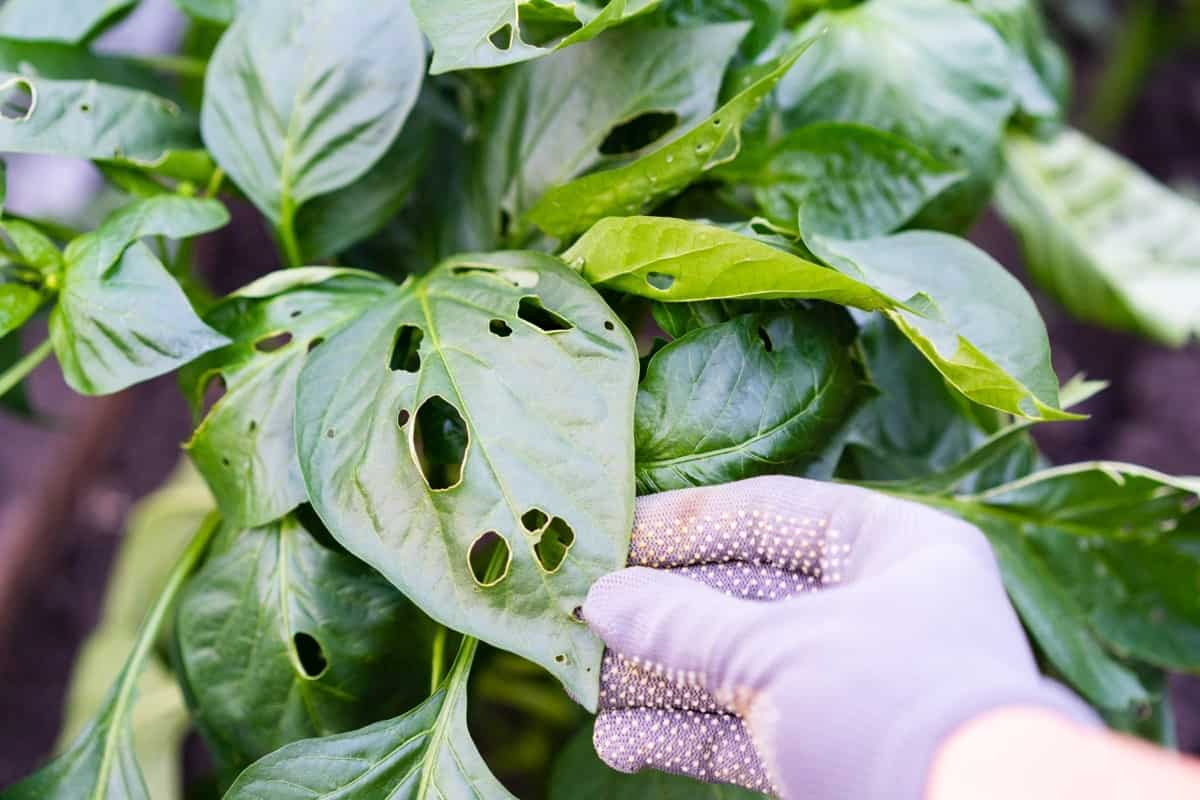Fall is a season of change, and for gardeners, it presents a unique opportunity to continue cultivating their green spaces. Many plants prepare for dormancy as the weather cools down and the days are shorter. However, this doesn’t mean that your gardening efforts need to come to a halt. One of the key things to remember when it comes to fall gardening is that different plants have different needs during this season. While some may thrive in cooler temperatures, others may struggle or even perish if not properly cared for.
15 Gardening Mistakes to Avoid This Fall
Planting Too Late for Vegetables, Flowers, Fruits, and Herbs
One common mistake many gardeners make is planting their vegetables, flowers, fruits, and herbs too late in the fall. Planting too late in the fall can result in stunted growth or even failure to thrive altogether. This is because as the weather gets colder and daylight hours decrease, plants have less time to establish themselves before winter sets in. For vegetables like Lettuce, Spinach, and Radishes, planting them late in the fall may require more time to mature before frost arrives.
The same goes for flowering plants such as Pansies and Mums – if you wait too long to plant them, they won’t have a chance to produce those beautiful blooms we all love. Fruit trees and berry bushes also need ample time to establish their root systems. Planting them too late can leave them vulnerable to damage from freezing temperatures. Even herbs like Rosemary and Thyme can suffer if planted too close to winter. These aromatic plants prefer warmer conditions for proper growth.
Neglecting Soil Preparation
One of the most common mistakes gardeners make in the fall is paying attention to soil preparation. Properly preparing your soil before planting ensures that it has adequate nutrients and drainage. To avoid this mistake, test your soil’s pH levels and nutrient content. This will help you determine if any amendments are needed to create an optimal growing environment.

Adding organic matter can improve soil structure and fertility. Another important aspect of soil preparation is removing weeds and loosening compacted dirt. Weeds compete with your plants for resources, while compacted soil restricts root growth. Take the time to clear away any existing weeds and use a garden fork or tiller to break up dense areas.
Overwatering
Overwatering is the most common mistake gardeners make in the fall season, and it can harm your plants. While it may seem counterintuitive, giving your plants too much water can drown their roots and lead to root rot. It’s important to find the right balance when it comes to watering. When you overwater your plants, the excess moisture prevents oxygen from reaching the roots.
In case you missed it: 15 Gardening Mistakes to Avoid This Summer: Green Thumb Guide

Paying attention to your plant’s specific needs is important to avoid overwatering. In general, however, it’s better to underwater than overwater – most plants prefer slightly dry conditions rather than constantly wet soil. One way to determine if your plant needs water is by checking the moisture level in the soil.
Failing to Mulch Vegetables, Flowers, Fruits, and Herbs
One common mistake many gardeners make in the fall season is failing to mulch their vegetables, flowers, fruits, and herbs. Mulching provides numerous benefits to your plants and can greatly improve their health and productivity. When you neglect to mulch plants in the fall, you leave them vulnerable to various issues. Without a protective layer of mulch, the soil around your plants is more prone to drying out quickly in hot weather or waterlogging during heavy rains. This can lead to stress for your plants and may even cause them to wilt or die.
In case you missed it: 10 Common Herb Gardening Mistakes and How Every Beginner Should Avoid Them

Mulching also helps regulate soil temperature by insulating the roots from extreme heat or cold. Maintaining a stable root environment gives your plants a better chance of thriving. In addition to moisture retention and temperature regulation, mulching suppresses weed growth by blocking sunlight from reaching weed seeds in the soil. Weeds compete with your desired plants for nutrients and resources, so keeping them at bay will allow your vegetables, flowers, fruits, and herbs to flourish without unnecessary competition.
Not Providing Adequate Sunlight
When it comes to gardening, sunlight is a crucial factor for the growth and development of your plants. However, one common mistake many gardeners make is needing to provide adequate sunlight for their vegetables, flowers, fruits, and herbs. With enough sunlight, they may grow properly or even fail altogether. It’s important to understand the specific light requirements of each type of plant in your garden.
Next, observe your garden throughout the day and identify areas with the most direct sunlight. This will help you determine where to plant certain crops or position containers for optimal sun exposure. If you have limited space or only shady spots in your garden, consider using reflective surfaces like mirrors or white walls to bounce additional light onto your plants. If necessary, you can also use artificial lighting, such as grow lights.
Ignoring Pest Control for Vegetables, Flowers, Fruits, and Herbs
When you neglect to implement pest control measures, your plants are susceptible to insect attacks. These critters can munch away at your leaves and buds, leaving unsightly holes and stunted growth. Not only do pests feed on your plants’ foliage, but they can also transmit diseases. They act as vectors for viruses and bacteria that can destroy entire crops if left unchecked.
In case you missed it: 9 Common Raised Bed Gardening Mistakes: Every Gardener Must Avoid Them

Regularly checking your plants for signs of infestation is crucial in catching any potential problems early on. You can minimize damage to your precious garden by promptly addressing pest issues with appropriate control methods. Taking steps such as removing debris where pests hide or installing physical barriers like netting can go a long way in keeping them at bay.
Skipping Crop Rotation
Crop rotation is a fundamental practice in gardening that involves changing the location of crops each season. By rotating crops, you can help improve soil fertility, prevent pests and disease buildup, and maximize yields. However, it’s a mistake that many gardeners make: skipping crop rotation. Planting the same crop type in the same spot year after year leads to poor growth and lower yields over time. Additionally, pests and diseases can become established in these areas since they have a continuous food source.
To avoid this common mistake, plan your garden carefully each year. Make sure to rotate different types of plants in different areas to ensure balanced nutrient uptake from the soil. For example, follow a leafy green with a fruiting plant or legume for optimal results. By skipping crop rotation, you are setting yourself up for ongoing challenges with poor soil health and increased pest problems. Take the time to plan your garden rotations strategically and reap the benefits of healthier plants and bountiful harvests.
Overcrowding Plants
Overcrowding plants in your garden can lead to a whole host of problems. While squeezing as many plants as possible into a small space may be tempting, this can hinder their growth and overall health. When plants are overcrowded, they must compete for resources such as sunlight, water, and nutrients from the soil. Furthermore, overcrowding can create a humid environment with poor air circulation, ideal for spreading fungal diseases. Plants too close together also make it difficult to access each plant for pruning or harvesting.
To avoid overcrowding your plants, give them enough space based on their specific requirements. Research the recommended spacing for each vegetable, flower, fruit, or herb you plan to grow. This will ensure that each plant has ample room to grow and thrive. Proper spacing promotes healthy growth and allows for better airflow between plants, which helps reduce the risk of spreading diseases. It also makes it easier to maintain your garden by providing easy access for maintenance tasks like weeding and harvesting.
Neglecting Weed Control in Vegetables, Flowers, Fruits, and Herbs
Weeds compete with your plants for essential nutrients like water and sunlight. They can steal valuable resources from your garden favorites, leading to stunted growth or death. By neglecting weed control, you’re essentially allowing these intruders to rob your plants of their full potential.
In case you missed it: Common Mistakes Gardeners Make When Propagating Plants from Cuttings

Weeds provide a perfect hiding place for pests and diseases. When left unchecked, they create a cozy environment for harmful insects and pathogens to thrive. This can quickly escalate into an infestation or an outbreak that wreaks havoc on all your hard work. Furthermore, neglecting weed control also compromises the aesthetic appeal of your garden.
Using Improper Planting Techniques
One common mistake is not properly preparing the soil before planting. Another mistake is planting too deep or too shallow. Each plant has specific depth requirements, so following the recommended guidelines is crucial. Planting too deep can suffocate the roots, while planting too shallow can expose them to drying out.
Spacing between plants is also essential for their overall health and productivity. It’s important to remember proper watering techniques as well. Overwatering can drown the roots and cause rotting, while underwatering will deprive your plants of essential moisture. Neglecting proper fertilization methods can hinder plant growth. Different types of plants require different nutrient levels, so it’s crucial to provide them with the appropriate fertilizer at the right time.
Not Pruning or Trimming
Pruning and trimming are essential in maintaining your garden’s health and appearance. Pruning helps promote healthy growth by removing dead or diseased branches. These can become a breeding ground for pests or diseases that can spread throughout the plant. Trimming also encourages airflow through the foliage, reducing the risk of fungal infections.
In case you missed it: Cleaning Tips for Your Greenhouse: Best Time to Clean and Common Mistakes

Regular pruning and trimming also help shape plants and maintain their desired size. Without proper maintenance, shrubs and trees can become overgrown and unruly, blocking sunlight from reaching other plants in your garden. It’s important to note that different types of plants require specific pruning techniques. Some may benefit from annual pruning in the fall to encourage new growth, while others may need more frequent attention throughout the year.
Neglecting Disease Prevention
One common mistake is ignoring the signs of disease or assuming it will go away independently. Diseases can spread quickly among plants if left unchecked, leading to wilting leaves, stunted growth, and even death. It’s essential to be vigilant and regularly inspect your plants for any signs of trouble. Another crucial aspect of disease prevention is maintaining proper plant hygiene.
This means promptly removing any dead or diseased plant material and disposing of it. These materials can harbor harmful pathogens that can infect healthy plants nearby. In addition to proper hygiene practices and watering techniques, using organic fungicides or pesticides when necessary can help protect your garden from diseases without harming beneficial insects or pollinators.
Failing to Protect from Frost
Failing to protect your plants from frost can be costly for any gardener. Those delicate leaves and stems can quickly become damaged or even killed off completely when the temperatures drop. Knowing which of your plants are more susceptible to frost damage is important. One effective protection method in fall is covering plants with blankets or sheets when frost is forecasted.
This simple act creates a barrier between the cold air and the plant. Another option is cloches or row covers made from plastic or fabric. These protective devices create a mini greenhouse effect by trapping heat around the plant. If you have potted plants that cannot be easily moved indoors, consider placing them against a warm wall or bringing them closer to the house, where they may receive some residual heat.
Overharvesting or Underharvesting
Overharvesting or underharvesting can be a common mistake many gardeners make, whether they are growing vegetables, flowers, fruits, or herbs. It’s important to find the right balance when harvesting your plants. Educating ourselves about proper harvesting techniques for each plant variety is crucial to avoid these mistakes. Understanding when a fruit is at peak ripeness or a vegetable is ready for picking will ensure you get the best flavor and nutritional value from your harvest.
Regularly monitoring your plants and keeping track of their growth will help you determine when they are ready to be harvested. Remember that every plant has different requirements regarding harvesting frequency. Some plants produce continuously throughout the season, while others have limited harvest windows. Stay informed about each crop’s recommended harvesting practices so you don’t miss out on their potential yield.
Disregarding Companion Planting
Companion planting involves grouping plants based on their compatibility and the benefits they can bring to each other. However, many gardeners need to pay more attention to this important aspect of gardening. By planting certain plants together, you can naturally deter pests, attract beneficial insects like bees and butterflies, enhance soil fertility, and even improve flavor in some cases. Remember that not all plant combinations are beneficial. Some plants compete for resources or release substances that inhibit growth in neighboring plants.
That’s why it’s crucial to do your homework before randomly throwing seeds into the ground. Plan out your garden layout carefully with compatible companions in mind. Consider factors like sun exposure requirements, water needs, growth habits, and bloom times. This thoughtful approach will result in healthier crops with less pest pressure. Companion planting adds visual interest to your garden by creating beautiful color combinations or contrasting leaf textures.
Conclusion
Gardening in the fall can be a rewarding and enjoyable experience if done correctly. By avoiding common mistakes, you can set yourself up for success and have a bountiful harvest of vegetables, beautiful flowers, delicious fruits, and fragrant herbs. As fall approaches, it’s important to avoid common gardening mistakes in fall that hinder your success in growing vegetables, flowers, fruits, and herbs. By being mindful of the specific challenges and needs of each type of plant during this season, you can ensure a vibrant and thriving garden all year round.
- How to Grow Tomatoes Organically at Home: A Comprehensive Guide
- Organic Gardening on a Budget: Low-Cost Methods and Materials
- Gongura Seed Germination and Planting Methods
- Cabbage Seed Germination and Selection
- Broccoli Seed Germination and Selection
- Asparagus Seed Germination and Variety Selection
- Seasonal Flower Gardening: Best Practices for Spring, Summer, Fall, and Winter
- How to Grow Hibiscus from Flower
- Plantation Ideas for Home Decoration: A Beginners Guide
- Flower Garden Designs and Layouts for Beginners
- Planting and Spacing Techniques in Papaya: A Beginner’s Guide
- Growing Gold: Essential Techniques for Planting Pineapples
- How to Make Kalanchoe Plant Bushy: Home Remedies and Solutions
- 11 Reasons Why Your Gardenia is Not Blooming: Home Remedies and Solutions
- Eco Elegance: The Guide to Designing a Drought-Tolerant Landscape
- Gardening on a Slope: Strategies for Hillside Landscaping
- Nourish and Flourish: Top Organic Mulches for Thriving House Plants
- Everything You Want to Know about Indian Mogra Flower: Discover Uses and Growing
- Green Thumb Success: Expert Tips for Cultivating Greenhouse Pumpkins All Year Round
- Maximize Growth & Flavor: The Ultimate Guide to Companion Planting in Herb Gardens
- How to Control Rhododendron Problems Naturally: Home Remedies and Organic Ways to Fix Them
- Natural Magic: The Remarkable Benefits of Cinnamon for Plants
- Best Steps to Revive Dying Tulip with Natural and Organic Treatment
- 10 Reasons Why Your Angel Trumpet is Not Blooming: Remedies and Treatment
- How to Fix Periwinkle Leaf and Flower-Related Problems: Natural Remedies and Solutions
- How to Fix Zinnias Leaf and Flower Problems: Discover Natural and Home Remedies
- Organic Steps to Induce Lemon Tree Flowers: A Comprehensive Guide
- Bloom Booster: Crafting the Perfect Homemade Bougainvillea Fertilizer
- Optimizing Growth: A Guide to Applying NPK Fertilizer for Potted Plants
- 10 Best Homemade Fertilizers for Rubber Plant: DIY Recipes and Application Method
- How to Boost Female Pumpkin Flowers: Effective Steps for More Flowers and High Yields
- Transform Your Indoor Garden: Top Benefits of Pink Salt for Houseplants
- 10 Best Homemade Fertilizers for Peacock Plants (Calathea): Easy DIY Guide
- Unlock Blooms: 9 Reasons Why Your Potted Chrysanthemum is Not Blooming
- 8 Reasons Why Your Potted Hibiscus is Not Blooming: Fix it with Simple Solutions
- Unlock Blooms: 9 Key Reasons Your Potted Frangipani Won’t Flower